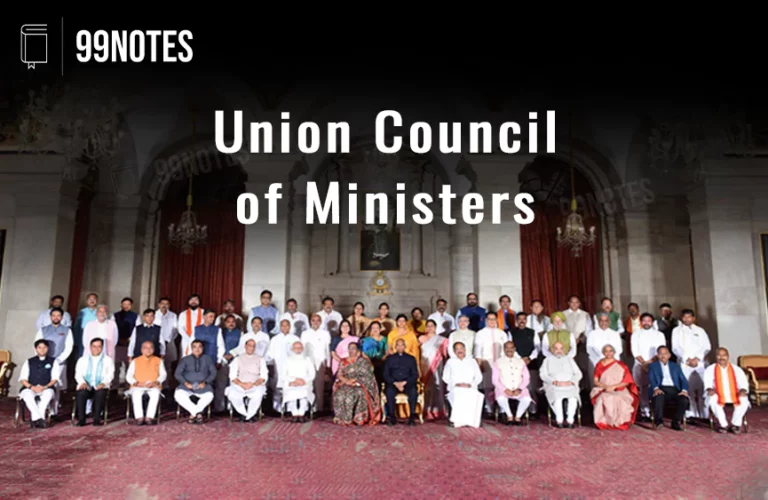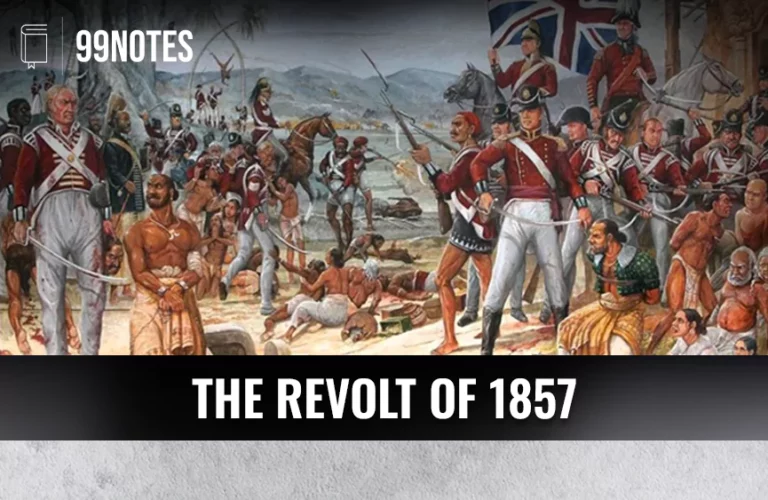Home Rule Movement (1916-1918): India’s Fight for Self-Governance [UPSC Notes]
Home Rule Movement
The Home Rule Movement, initiated by leader’s Annie Besant and Bal Gangadhar Tilak in 1916, Marked a significant phase in India’s independence struggle. It aimed at achieving self-governance within the British Empire through constitutional means, energizing the nationalistic fervor across the country and laying the groundwork for future protests against British rule.
The Home Rule movement in India started in the background of the ongoing world war and inactivity within the Congress after the Surat split. The differences between the moderates and the extremists led to the split in Congress and the exit of the extremists from Congress in the Surat session of Congress in 1907. After this, Congress was in a condition of almost total inactivity.
Politics in the Aftermath of the Surat split
- Inactivity within Congress: Many moderate leaders were also unhappy about the split, which had caused a state of inactivity in Congress. They were sympathetic to Tilak’s proposal.
- Change in Tilak’s attitude: Tilak understood that the sanction of the Indian National Congress is a necessary precondition for the success of any political action. Hence, to convince the moderates, he denounced violence and any activity that sought to overthrow the government. After release from jail in 1914, Bal Gangadhar Tilak sought readmission of himself and other extremist leaders in Congress.
- Pressure from Annie Besant: There was also considerable pressure from Annie Besant, who had just joined Congress in 1914 and sought to re-admit the extremists in Congress to revive the political activity.
- However, the Bombay moderate group led by Pherozshah Mehta persuaded Gokhale and the Bengal moderates to keep the extremists out.
- After that, Tilak and Annie Besant decided to restart the political activity on their own while maintaining pressure on Congress to re-admit the extremists.
History of Home Rule Movement
- There was growing resentment in the people due to high inflation and high taxation to fund the world war and the brutal repressions of the Ghadr movement.
- Annie Besant had just joined Congress and wanted to revive political activity by starting a movement similar to the Irish home rule league to demand self-rule for Indians within the British Commonwealth.
- In 1915, after the efforts of Annie Besant and Bal Gangadhar Tilak, the Congress decided to re-admit the extremists. However, she failed to gain the support of Congress and the Muslim League to set up the home rule Leagues. However, Congress agreed to the revival of local congress committees and a programme for educational propaganda.
- Tilak had already set up his Home rule League in April 1916, and finally, Annie Besant also set up her Home rule League since there was no response from Congress.
- Tilak and Annie Besant set up separate Home rule league`s to avoid friction since there were some differences of opinion among their followers.
ANNIE BESANT |
|
Tilak’s Home Rule League
- Tilak set up his League in April 1916 at the Bombay Provincial Conference in Belgaum.
- His home rule League was restricted to Maharashtra (excluding Bombay City), Karnataka, Central Province and Berar.
- Through his tours and lectures, he popularised the demands for home rule. He also linked the question of Swaraj or self-rule with the demand for the formation of linguistic states and the promotion of Vernaculars for education.
Annie Besant’s Home Rule League
- Besant’s League was formally established in September 1916 in Madras, and it covered Bombay and the rest of India.
- Her home rule League was loosely organized as compared to Tilak’s. George Arundale, BP Wadia and CP Ramaswamy Aiyer were his associates.
- Besides members of the theosophical society, many others, including Jawahar Lal Nehru in Allahabad, B Chakravarti and J Banerjee in Calcutta, joined her League.
- To spread the movement, she organized public meetings and campaigned through her newspapers, New India and Commonweal.
Program’s of the Home Rule Movement
- The main thrust of the movement was to build up an agitation around the demand for home rule through the means of political education.
- Political education was to be achieved through public meetings, setting up libraries, special classes for students, propaganda through newspapers, magazines and pamphlets, social work, etc.
- Several Congress members who were unhappy about the ongoing inactivity in the Congress also joined the agitation.
- Later, several big leaders of the Congress, like Motilal Nehru, Jawaharlal Nehru, CR Das, Madan Mohan Malaviya, Tej Bahadur Sapru, Lala Lajpat Rai, Mohammad Ali Jinnah, also joined the League.
Government’s Response on Home Rule Movement
The government was alarmed by the Home rule movement’s increasing popularity and tried to crush it. It took the following measures to prevent the spread of the movement:
- In Madras, students were barred from taking part in any political activity.
- In June 1917, the government arrested Annie Besant and her associates George Arundale and BP Wadia. This led to a nationwide protest. Sir S Subramania Aiyar gave up his Knighthood in protest. Moderate leaders like Madan Mohan Malviya, Surendra Nath Banerjee and Mohammad Ali Jinnah, who had until now stayed away from the movement, joined the League in solidarity.
- The prevailing situation was described by Montagu, the secretary of state for India. “Shiva cut his wife into fifty-two pieces only to discover that she had fifty-two wives. This is what happens to the Government of India when it interns Mrs Besant”.
- In the atmosphere of conciliation generated by Montagu’s statement of 1917, Annie Besant was released in September 1917.
Montagu’s Statement of 1917 |
| In 1917, Edwin Montagu, the secretary of state for India, made a statement in the British House of Commons in which he talked about constitutional reforms in India.
The Montagu’s statement included:
Factors responsible for the announcement of the reforms
The declaration became the basis for the reforms proposed in the Mont-Ford report of 1918. It became the preamble of the Government of India Act 1919. |
The decline of the Home Rule movement:
Despite its great advance in 1917, the home rule movement faded out by 1919 due to several factors.
- The moderates who joined the home rule League after Annie Besant’s arrest were pacified after her release and the talk of reforms by the Government (Montagu’s statement of 1917).
- The moderates also lost their interest due to talks of passive resistance.
- Annie Besant was inconsistent in her approach towards the path of passive resistance. Once rejected the offer of reforms by the government, she later argued in favour of acceptance.
- Annie Besant was unable to provide a firm lead, and the absence of Tilak due to his travel to England left the home rule movement leaderless.
- The advent of Gandhi and his experiments of passive resistance in South Africa and India gradually attracted the masses and nationalist leaders. Gandhi accepted the leadership of the League in 1920 and changed the name of League to Swarajya Sabha; within a year, it was merged with the Indian National Congress.
Evaluation of the Home Rule Movement
The Home Rule League movement made significant contributions to the national movement. It is credited for the revival of political activity when Congress went into a dormant state.
- It popularised the idea of home rule or self-government at a mass level.
- The movement nurtured a generation of nationalist leaders who played an important role in the later part of the freedom struggle.
- It created organizational links between town and country, which proved beneficial when the freedom struggle entered the mass phase in the real sense.
- Montagu’s statement of 1917 and the subsequent Montford reforms were influenced by the home rule agitations.
- The efforts by Tilak and Annie Besant to reunite the moderates and extremists were instrumental in reviving political activity in the country.
However, the movement could not achieve any tangible outcome with respect to the idea of Home rule. Moreover, the idea of home rule did not find much traction in the new leadership of the Congress, which was more inclined towards the path of passive resistance.
The Lucknow session(1916) of the Indian National Congress
The Lucknow session(1916) of the Indian National Congress is known for the readmission of extremists to the Congress and the famous Lucknow pact between the Congress and the Muslim League.
Readmission of Tilak and other Extremists to the Congress
Under the leadership of Moderate president Ambika Charan Mazumdar, Tilak and his men were welcomed into Congress. Various factors were responsible for their readmission.
- Realization by both groups that separation has caused inactivity within Congress
- The death of moderate leaders Pherozshah Mehta and Gokhale cleared the path of entry of extremists into Congress.
- Efforts by Tilak and Annie Besant.
Lucknow Pact Between Indian national Congress and the Muslim League
Background
- The annulment of the Bengal partition in 1911 and Britain’s involvement in the war against the Ottoman Empire in 1914 gave the feeling to many Muslims that they could no longer rely on the British Government.
- The young nationalists within the League felt the need for rapprochement between the Congress and the League in the movement against colonial rule.
- Tilak and Annie Besant played a significant role in bringing the two parties together, even against the wishes of leaders like Madan Mohan Malviya.
The Pact
- The Congress and the League agreed to common joint demands. Demand for self-government was declared as the immediate goal.
- The Congress, which had opposed the separate electorate in Morley Minto reforms in 1909, agreed to accept it in the pact.
- In the Pact, Muslims have conceded one-third of the seats in the central legislature, half of the elected seats in Punjab and a separate electorate in seven states.
- Other demands included an increase in the number of elected seats in councils, at least fifty per cent Indians in viceroys’ and provincial governors’ executive councils, etc.
Impact of the Pact
- Conservative elements within and outside both the groups opposed the pact.
- The acceptance of a separate electorate by the Congress was a significant event in the evolution of the two-nation theory and the growth of communal politics.
- Even though the pact inspired the younger Muslims to join the Congress-led nationalist movement, the leaders of both groups did not make efforts to bring masses from both communities together.
- Rising nationalist fervour due to the Lucknow pact and the already burgeoning home rule agitations compelled the government to announce constitutional reform measures.
First World War and Nationalist response |
|
FAQ’s Related to Home Rule Movement
The Home Rule Movement (1916-1918) was an Indian Freedom movement that was demanding a self-governance within the British realm just like Australia and Canada.
Who started home rule movement?
Annie Besant and Bal Gangadhar Tilak started home rule movement.
Who started Home Rule Movement in Pune?
In Pune, Bal Gangadhar Tilak started the Home Rule League.
Who led the Home Rule Movement in Ireland?
Charles Stewart Parnell led the Home Rule movement in Ireland.

![Home Rule Movement (1916-1918): India'S Fight For Self-Governance [Upsc Notes] | Updated July 27, 2024 Everything You Need To Know About Home Rule Movement](https://99notes.in/wp-content/uploads/2024/02/home-rule-featured-66698a5b2a805.webp)





